Mammal Mobiles and Ornaments
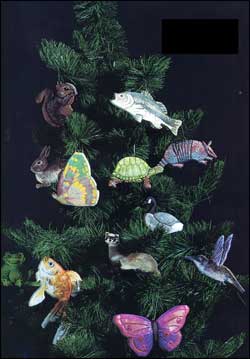
These dough ornaments were sprayed with clear fixative to seal the baked dough, painted with acrylics, allowed to dry, and sprayed again with fixative. Acrylics dry fast so they must be worked quickly to blend colors.
Pioneer families had to make their own decorations – to bring warmth and beauty to their homes throughout the year and to decorate their tree at Christmas time. The art of creating homemade decorations is still quite popular today, and wildlife is a fitting subject for such handcrafted objects. Types and designs of ornaments are as varied as the imaginations of the people involved. Yam, styrofoam, beads, beans, sequins, papier-mache, felt, and many other such items have been glued, wired, or sewn together to make original Christmas tree decorations, for example.
Some people, taking their creative talents to the kitchen, have learned how to make ornaments from dough. These figures may be hung from the tree or displayed in a mobile for your room. The dough, a mixture of flour, salt, and water, can be molded like clay or rolled flat so cutouts like cookies can be made. Here, too, your imagination is the only restriction to the variety of decorations you can make.
To prepare the dough for these ornaments, mix together 4 cups of flour, 1 cup of salt, and 1-1/2 cups of water. Knead the mixture for four to five minutes. If the dough is too stiff, add a tiny bit of water. For some strange reason the dough will not be workable if the recipe is doubled or cut in half, so mix it in the amounts given here.
To make wildlife ornaments such as the ones pictured with this article, trace or draw a few animal shapes and then make cardboard cutouts from them to serve as patterns for cutting the dough. You can use the mammal figures shown here or make your own patterns.
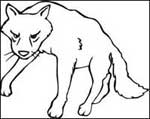
To use these patterns to make mammal ornaments like those in the photograph, follow this basic techique.
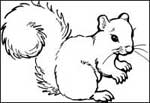
Use a wet brush to apply a light brown base, thick enough to be opaque but thin enough to spread evenly. Add darker shades around detail cuts, and blend on some edges for depth.
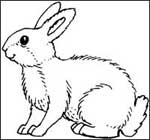
To obtain hair look, brush lightly with very little paint on dry brush. Add eye highlights, whiskers and face details when other paints are dry.
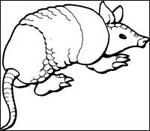
For the armadillo, add white spots after the brown base with gray shading dries.
On a piece of wax paper, roll some of the dough to a thickness of about one-fourth inch. Cut out one of the animal shapes, peeling away the excess dough as you go. The dough cutouts can be handled, but do it carefully so the shape is not distorted. To prevent any distortion, pick up the wax paper, put the dough cutout face down on a piece of foil in a cookie tray and then pull off the wax paper.
Now you are ready to use a toothpick, wooden matchstick, popsicle stick, fork tine, or other object to press in body details or designs. Push a hanger made from a hairpin, piece of wire, or paper clip into the top of the ornament so it can be hung on the tree or on strong threads suspended from two crossed sticks for a mobile.
When the cookie pan is full, bake the dough for about an hour in an oven preheated to 350 degrees F. If the figures are still soft to the touch, bake them a little longer. Thinner ornaments will bake faster. Spread them out on a newspaper to cool when they are done. Poster paints, acrylic paint, or water colors can be used to add color to the finished ornaments, or they can be left natural. Beads, pieces of felt, or other such items may be used to further decorate the animals.
Spray the finished ornaments with a clear fixative to preserve them.
These dough ornaments should not be eaten. However you can use duplicates of your ornament patterns to make wildlife animal cookies from regular cookie dough. Follow the same directions for rolling the dough, cutting the shapes, and pressing in the body designs, but do not add the wire hangers. Once the cookies are baked according to the directions for the cookie dough, they can be decorated with edible cake decorations and icing.
Hung on an evergreen tree, these ornaments can add a touch of nature to your Christmas celebration. Displayed as a mobile, they will enable you to enjoy your handiwork and the animals around you all year long.
Ilo
Hiller
1990 – Mammals Mobiles and Ornaments: Introducing Mammals to Young
Naturalists. The Louise
Lindsey Merrick Texas Environment
Series, No. 10, pp. 89-91.
Texas A&M University
Press, College Station.